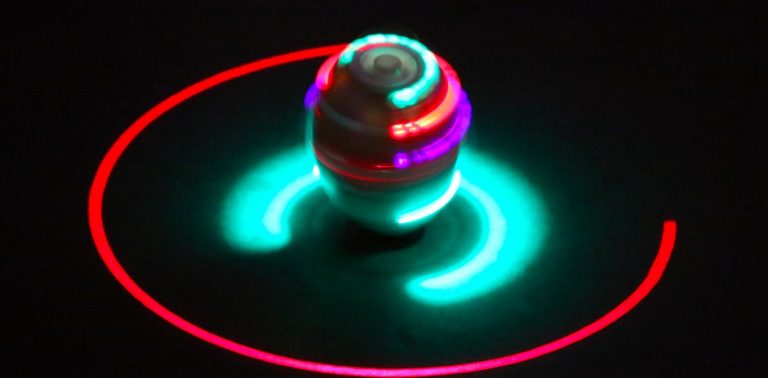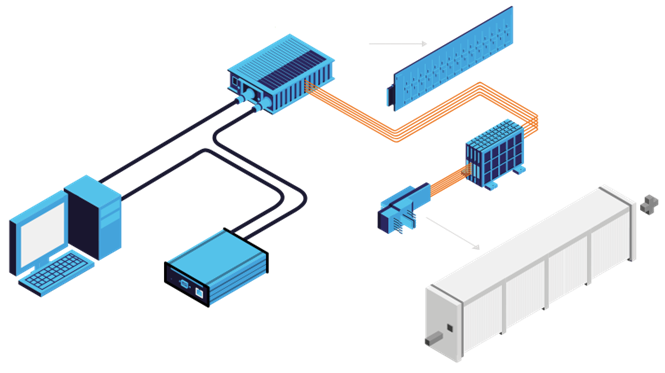The scientists have mainly ramped up the research in spintronics to make advances in the new quantum materials, new devices, and stable spin states. The research in the spintronics has been on the rise over the last decade. As per the 2020-2025 forecast report from Mordor Intelligence on spintronics, the market share controlled by the technology is expected to rise from $3.62 billion to $26 billion in the next five years.
Spintronics is the inherent spin of an electron in its associated magnetic moment or the strength and orientation of the object which produces a magnetic field in addition to electric charge.
The researchers from the University of Utah explain, “If you ever have done the old science experiment of turning a nail into a magnet by repeatedly dragging the magnet with its length, then you already have in the spintronics. Additionally, the magnet transfers data to the nail.”
Scientists have discovered this novice field of applied science to advance electronics in solid-state devices utilizing electron spin to carry data instead of its charge.
The electronics manufacturers already have applied the spintronics in some form or other to produce the read head on the hard drives, named magnetics sensors and MRAM (Magnetoresistive Random Access Memory). The spintronics provides less power consumption, enhanced data processing speed, and larger densities over current semiconductor devices.
Recently, scientists have ramped up their research into the relatively new branch of physics to make breakthroughs utilizing new devices, new materials, stable spin states, and a new kind of LED.
New Material for Quantum Tech and Antiferromagnetic Spintronics
Researchers from the institutions of Technische Universitat and others have discovered new material whose state has the potential for application in quantum technologies and antiferromagnetic spintronics.
The material recognized as the manganese bismuth telluride (MnBi2Te4) has a pair of properties that favor spintronics, incorporating superconductivity and magnetism, which makes it a perfect material for data processing, sensors, computing, and others.
As quantum material generally needs conditions, like low temperatures, high pressures, and high magnetic fields. Scientists are consistently researching other methods of producing those materials without any strict needs.
Thus, as an outcome, the researchers developed a novel crystal-growing procedure to produce the first intrinsically magnetic topological material (MTI) that offers quantum phenomena within the material.
New MnBi2Te4 MTI contains an edge state on the features which might realize quantized hall conductivity material without the requirement for a strong magnetic field. This makes it highly useful content for antiferromagnetic spintronics as well as two-dimensional ferromagnets.
Already the researchers have devised an optimized synthesis protocol that makes it easier to produce materials that are more structural derivatives to push the MTIs, enhancing its application potential.
Molecular Spintronics Covered Way for Miniaturization
Some scientists have made some enhancements in the new material for spintronic applications, and others have made advancements in spintronic stability by gaining control of the spin states of the individual molecules.
Physicists and chemists from Kiel University have deposited, designed, and operated single molecular spin switches on the surface, enabling the spin states that don’t lose functionality while absorbed into the said surfaces. Researchers state that the novice molecules remain stable for at least several days which is unprecedented in the spintronics field.
The secret lies in the design trick which resembles flip-flops in the electronic circuits found in the CPUs, which has been realized by looping the output signal back into the input.
A “Miracle Mineral” for Spintronic Devices
Materials play a crucial part in the development of spintronics devices, and some scientists have made some of the perfect strides in producing some new stuff for the applications of spin while other innovative devices are utilizing substances that were discovered a century ago.
Perovskites are categorized as any of the materials that feature the same crystalline makeup as the calcium titanium oxide. For ages, perovskite has been there, and its value has become relevant during the last ten years as companies might have used its crystalline structure for manufacturing energy-efficient solar panels.
The researchers from Utah University have designed a pair of spintronic devices that use the class of perovskite recognized as the organic and inorganic hybrid that provides sizeable spin-orbit coupling.
The first devices are spintronic-based green LED that works identically as the traditional LED which utilizes diodes and electrons to emit the light. Only the spintronic version features magnetic electrodes and electron holes which polarized to get particles with spins.
The LED illustrates the electroluminescence in green wavelength of the color spectrum that proves magnetic electrode to transferred successfully through perovskite material.
Identical devices can be found in the modern hard drive. Only, the spintronic version can spin injected into the machine and cause it to wobble utilizing the magnetic manipulation.
The researchers from Mordor Intelligence predict that the researchers will consistently find ways to deploy the spintronic data storage for a comprehensive range of applications, including use in electric vehicles as well as industrial motors.
Souce: https://tu-dresden.de/tu-dresden/newsportal/news/wissenschaftler-entdecken-erstes-antiferromagnetisches-topologisches-quantenmaterial



